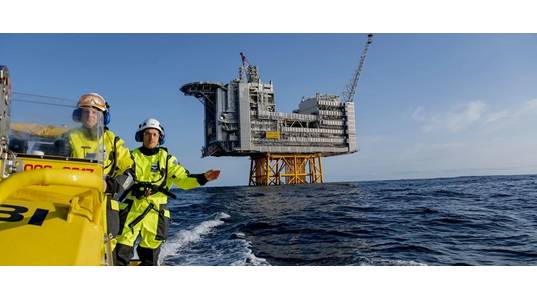
Norwegian company Parat Halvorsen will supply the electric boilers that will provide the heating on the Edvard Grieg platform offshore Norway when the field is supplied with power from shore.
"This means that the last piece of the puzzle to fully electrify Edvard Grieg is coming into place," Lundin Energy, the operator of the platform said Friday. The plan for electrification of the Edvard Grieg platform was announced in October 2019.
The platform will be electrified together with the Johan Sverdrup Phase 2 project as part of the Utsira High Area power grid. Both heating and power needs will be met with power from shore by 2022.
This will account for an annual emission reduction of around 200,000 tonnes of CO2, the equivalent of taking approximately 65,000 private cars off the road.
On Friday 26 June 2020, a contract was signed with Parat Halvorsen company for the supply electric boilers.
"Parat is a well established Norwegian company that delivers high-quality turn-key products. The company has demonstrated their ability to work with us as partners and incorporate our specific requirements, as well as listening to any input we may have,” says field development director in Lundin Energy Norway, Charlotte Berge.
“This is the first time an electric boiler is placed outdoors offshore in the North Sea. Therefore, it is essential with high quality in the delivery”, says Berge who signed the documents together with Parat’s managing director, Yngve M. Halvorsen.
“This is a great day for us. When the corona situation and the rapid oil price decline hit us, we noticed a wait-and-see attitude in the market. Therefore, it means a lot to us that Lundin Energy Norway has kept a steady course on this project, and that we have reached this contract today.” says Halvorsen.
According to Lundin Energy, the Edvard Grieg platform was designed to receive electric power from shore right from the original plans in 2010. In 2014 the Norwegian Parliament (the Storting) passed a resolution to build a solution for power supply from shore for Johan Sverdrup, and the other platforms in the area were to be tied into this solution with Phase 2 of the Johan Sverdrup development.
“We are really looking forward to operate the Edvard Grieg platform with power from shore. In addition to emissions reductions, we hope to reach even more efficient operation. This also reduces operating costs since we will no longer have to operate our own power plant offshore, and we also expect to achieve a more stable production, says Operations Director Kari Nielsen.
Once the area solution for power from shore is in place in 2022, oil and gas production from the Utsira High will have some of the lowest emissions in the world, with less than 1 kg of CO2 per produced barrel, Lundin Energy said.
In a report released on Friday, the Norwegian Petroleum Directorate said that more than half of oil production in Norway would be powered from shore by mid-2020s.
Today, eight fields on the Norwegian shelf receive power from the Norwegian power grid. Decisions have also been made to supply another eight fields with power in this manner. This means that total CO2 emissions will be about 3.2 million tonnes lower per year than they otherwise would have been," the Norwegian Petroleum Directorate said Friday.



